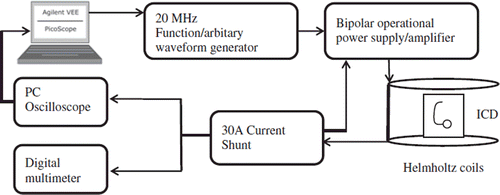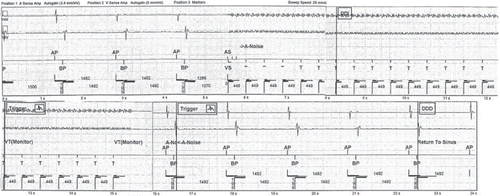Figures & data
Figure 1. A schematic figure of the test setup used to exposure. A is Ampere. ICD is an implantable cardioverter-defibrillator. MHz is mega Hertz. PC is a personal computer.

Table I Maximum intensities of magnetic fields used (Citation19).
Table II Manufacturers and models of the ICDs tested.
Figure 2. An example of an ICD's false detection of ventricular tachycardia. A sine-wave magnetic field (60 Hz, 410 µT) produced an artefact of ventricular tachycardia and made the ICD to switch to noise mode (DDI). The interference lasted 10 seconds which is equal to the time the magnetic field was applied. The ICD in question was St. Jude Medical's PROMOTE RF 3213-36. DDI is the programmed noise mode of the ICD. Hz is Hertz. ICD is an implantable cardioverter-defibrillator. µT is micro Tesla. s is second.

Table III ICDs that experienced interference, the type of interference and the waveform and frequency of the magnetic field used.
Table IV The highest magnetic field flux densities and ICNIRP reference levels that did not cause interference with any of the ICDs tested.